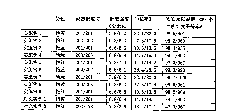Dyeing process of polyphenylene sulfide fiber
A polyphenylene sulfide fiber and process technology, applied in the direction of dyeing, liquid/gas/steam fiber/sliver/roving treatment, textiles and papermaking, etc., can solve the problem of reducing polyphenylene sulfide fiber, reducing color brightness, Affect fiber and other problems, to achieve the effect of improved washability, good vividness, and fast color fixation
- Summary
- Abstract
- Description
- Claims
- Application Information
AI Technical Summary
Problems solved by technology
Method used
Image
Examples
Example Embodiment
[0030] Example 1:
[0031] (1) Obtaining of the resin of polyphenylene sulfide resin:
[0032] The polyphenylene sulfide resin obtained above was prepared into a mixed solid-solution system with a content of 20-30% polyphenylene sulfide resin with N-methylpyrrolidone pure solution, and the temperature was raised to 200 ° C, after 60min of insulation, filtered while hot, Then, the solvent, N-methylpyrrolidone, was extracted with methanol for 6 times, and finally washed with oxygen-free deionized water for 9 times to obtain a polyphenylene sulfide resin that can be spun.
[0033] (2) Melt spinning and fiber thermal drawing of polyphenylene sulfide resin
[0034] The polyphenylene sulfide resin obtained in (1) is extruded and diced into polyphenylene sulfide chips through an extruder, and then the chips are dried in a vacuum environment of 160 ° C for 6 hours, and then enter the polyphenylene sulfide resin. In the spinning process, the long fibers or monofilaments spun out are ...
Example Embodiment
[0038] Example 2:
[0039] Others are the same as in Example 1.
[0040] The obtained polyphenylene sulfide long fibers or monofilament fibers were soaked in 5% calcium hypochlorite and 30% dextrin aqueous solution for 7 minutes, and the treatment temperature was 53 ° C, and then soaked in 7% reactive brilliant red K-3B alcohol aqueous solution for 25 minutes. , under the condition of the temperature of 37 ℃ and the normal pressure, the dyeing product of polyphenylene sulfide fiber is obtained by drying with 0.43m / s hot air for 33min. Its fiber characteristics after dyeing figure 2 manifested in. .
Example Embodiment
[0041] Example 3:
[0042] Others are the same as in Example 1.
[0043] The obtained polyphenylene sulfide long fibers or monofilament fibers were soaked in 5% sodium hypochlorite and 22% dextrin solution for 12 minutes, and the treatment temperature was 51°C, and then soaked in 6% reactive brilliant blue X-BR alcohol solution for 45 minutes After that, under the condition of a temperature of 42° C. and a normal pressure, the polyphenylene sulfide fiber dyed product is obtained by drying with a hot air of 0.41 m / s for 31 min. Its fiber characteristics after dyeing figure 2 The towel shows.
PUM
 Login to view more
Login to view more Abstract
Description
Claims
Application Information
 Login to view more
Login to view more - R&D Engineer
- R&D Manager
- IP Professional
- Industry Leading Data Capabilities
- Powerful AI technology
- Patent DNA Extraction
Browse by: Latest US Patents, China's latest patents, Technical Efficacy Thesaurus, Application Domain, Technology Topic.
© 2024 PatSnap. All rights reserved.Legal|Privacy policy|Modern Slavery Act Transparency Statement|Sitemap



